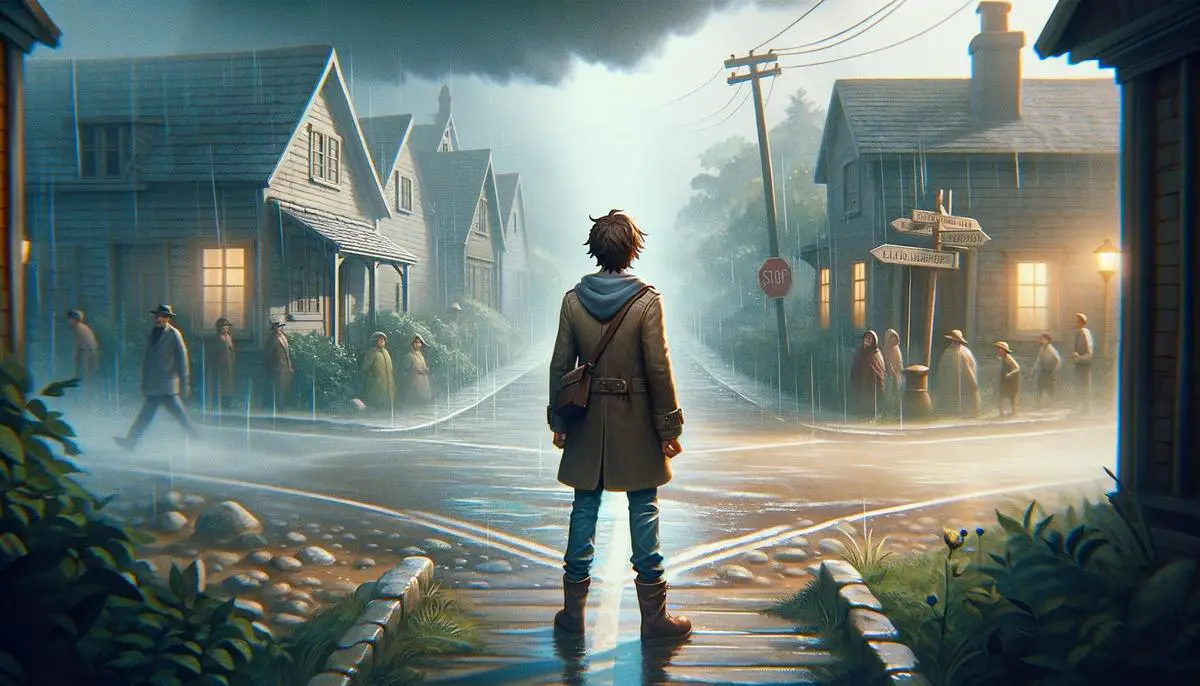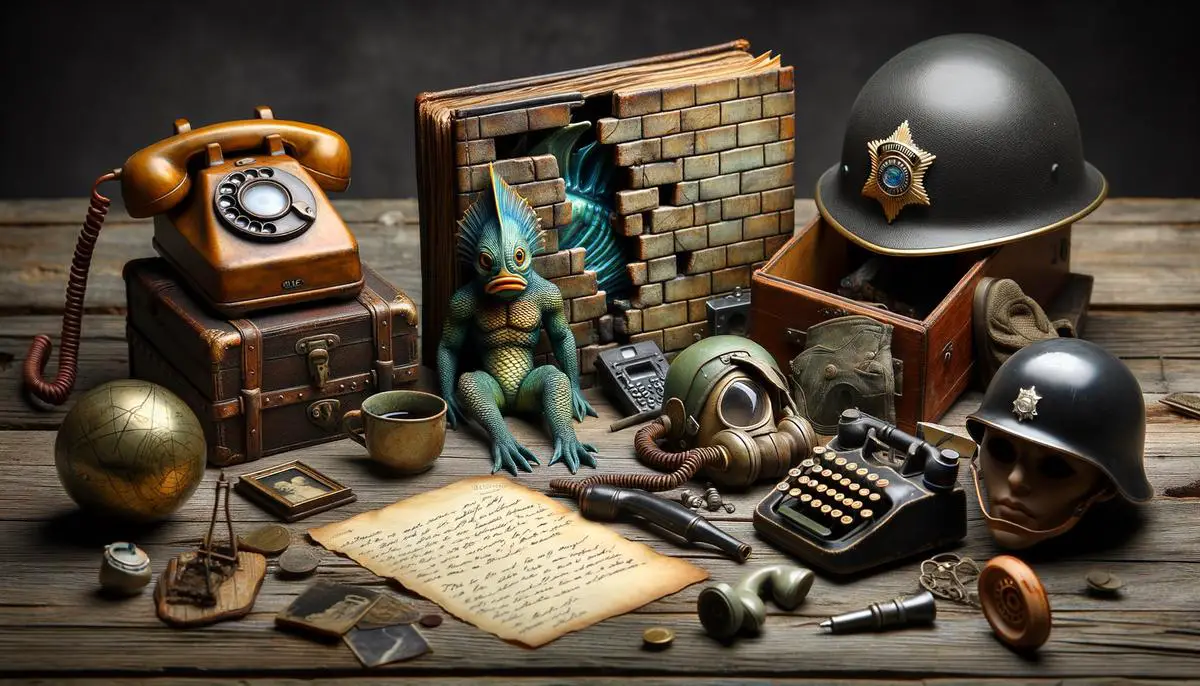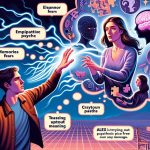In Life Is Strange: True Colors, the choices you make in Chapter 1 lay the groundwork for everything that follows. These early decisions shape the world around Alex, influencing her relationships and how her story unfolds. This article explores how these initial choices set a tone for both the challenges and opportunities that arise as you progress through the game.
Understanding Major Decisions and Their Impact
Choosing Directions in Life Is Strange: True Colors – The Ripple Effect of Chapter 1 Decisions
In Life Is Strange: True Colors, your early choices in Chapter 1 set the stage for profound impacts as the story unfolds. Decisions in this immersive narrative have long-lasting repercussions, affecting relationships and game endings. Let's uncover how Chapter 1 choices ripple through Haven Springs, influencing Alex's journey.
Telling Gabe About Ethan's Plans
Choosing to confide in Gabe regarding Ethan's venture into the mines instigates a trust bond that reverberates through the subsequent chapters. This action cements the bond between Alex and Gabe and impacts Ethan's safety narrative, shaping the story's progression. Concealing Ethan's plans introduces tension and potential consequences, establishing an emotional undertone for Alex's interactions.
Alex's Reaction to Gabe's Gift
Responding to Gabe's guitar gift showcases Alex's emotional depth and expresses her intrinsic value of family connections. An enthusiastic appreciation enhances Alex's bonding with Gabe, threading an element of personal growth and familial ties into her character development. This feeds into later decisions, where Alex's perspective on relationships and self-discovery are influenced by how she perceives value in Gabe's actions.
Handling Mac's Confrontation
Facing Mac at the bar encapsulates True Colors' thematic focus on choices and consequences. Supporting or opposing Mac influences Alex's standing within the small town community, impacting friendships, alliances, and perceived character alignment. This choice plants seeds of intrigue, maneuvering the player into realizing the intricate dynamics at play within Haven Springs.
The fabric of Life Is Strange: True Colors is woven with decisions from early chapters spilling over into complex narrative threads. Chapter 1 serves as a prologue to consequences, where choosing trust over deceit, openness over reservation, and passion over indifference sows the narrative soil for emerging relationships and personality growth.
As True Colors unravels, players encounter moments reflecting their Chapter 1 choices—every action a stroke on the canvas of Haven Springs' culture. Through friendship, mystery, and personal resolve, Chapter 1 establishes the foundational steps of Alex's intricate balance between truth and consequences in the vibrant yet veiled heart of Colorado. It's a poetic testament to the power vested in decision-making, influencing not just the immediate but shaping legacies in digital recounting.

In Life Is Strange: True Colors, Alex Chen's unique empathy ability plays a pivotal role in unfolding the narrative and shaping her relationships, especially in Chapter 1. This ability allows Alex to perceive and absorb the strong emotions of those around her, influencing her actions and decisions within the tight-knit community of Haven Springs.
When Alex encounters strong emotions, represented by colored auras surrounding individuals, she experiences a deeper connection to their feelings. This often leads to empathic resonance, where Alex not only understands what others are feeling but also experiences these emotions as if they were her own.1 This intense empathy challenges her throughout Chapter 1, offering unique insight into the lives and struggles of Haven Springs residents.
Upon meeting residents in distress or facing intense emotions, Alex uses her empathy to unravel hidden layers of their psyche, revealing secrets or truths otherwise obscured. For instance, when encountering Ethan's fear, Alex's empathy physically manifests, allowing her to visualize his paralyzing terror. This experience affects Alex deeply, pushing her towards actions that might help alleviate others' emotional burdens or address unresolved issues.
Alex's interaction with Charlotte is another key instance where her empathic ability shapes the course of their relationship. Exposed to Charlotte's violent anger, Alex stands at a crossroads where she could choose to absorb this rage, profoundly altering her emotional state and affecting subsequent interactions. This capacity to quite literally take on others' pain highlights the weight her ability bears on her interpersonal dealings.
Alex's empathy also underlies her approach to decision-making. Each choice fueled by her empathic insights has a ripple effect, impacting both immediate situations and future dynamics within Haven Springs. Her ability doesn't result in a straightforward path; instead, it weaves a complex web of relationships enriched by an authentic understanding of others' internal worlds. Her empathic responses pave the way for moments of vulnerability and connection that are foundational to the game's narrative progression.
Alex's empathy shapes her interactions profoundly in Chapter 1, serving as both a gift and a burden. The intensity of her ability influences not only how she relates personally to others but also the broader narrative outcomes based on the emotional connections she chooses to engage with or distance herself from. Through Alex's eyes, players navigate a world where emotional resonance becomes a powerful tool for understanding, healing, and sometimes inadvertently, hurting.

Collectible Locations and Their Narrative Contribution
Chapter 1 of Life is Strange: True Colors weaves a rich tapestry of emotion, choice, and consequence, grounding you firmly within Alex Chen's empathically charged world. Navigating this first chapter requires sharp intuition and emotional intelligence, as well as a keen eye for collectibles that dot the landscape of Haven Springs. Each collectible you encounter is a gateway into the deeper, often unspoken layers of the story and its characters. Here's where to find them in Chapter 1 and how they enrich the narrative.
Collectible 1: A Letter to Riley
Found in Alex's new room after the intense face-off with Mac, this letter symbolizes the fragile connections holding Haven Springs together. It's a glimpse into the strained yet hopeful fabric of relationships in Alex's world. To find it, look near the desk in her room. This collectible introduces you to the power of empathy beyond your own feelings, opening a window into Mac's perspective.
Collectible 2: Crack in the Wall
As you explore the record store, pay attention to a seemingly innocuous crack in the wall. This crack holds a hidden memory of resilience and an echo of past music-filled nights that once brought life to these confined spaces. It sheds light on how physical spaces in Haven Springs are imbued with emotional residue, grounding you further into Alex's ability to sense and navigate these emotional landscapes.
Collectible 3: Officer Fish
This odd yet endearing collectible is found amidst the tense search for Ethan at the mines. As you piece together the trail with clues from Ethan's comic book, keep an eye out for a quirky decoration near the entrance. Officer Fish symbolizes innocence and the childhood sense of adventure, contrasting sharply against the life-threatening dangers posed by the mines.2 This juxtaposition exemplifies how Alex's empathy intersects with her personal stakes in the safety of Haven's residents.
Collectible 4: Helmet
Located just before the ominous descent into the mines, finding the Helmet reminds players of the reality of Haven as a mining town—its prosperity marred by risks and sacrifices. It's a solemn nod to the shared history and the lurking dangers beneath Haven's quaint facade, threading empathy through shared experiences of loss and hardship.
Collectible 5: Phone
At a crucial juncture in the mines, this collectible calls attention to the silent cries for help that reverberate through Haven Springs. Tuning into this object's memory, you reveal not just voices from the past but also the urgent need for connection in moments of isolation. It underscores empathy's role in transcending silence, illuminating paths out of darkness for those lost and alone.
Recovering these collectibles in Chapter 1 deepens your immersion into Alex's empathic journey. Each item you discover and interact with uncovers layers of narrative threads, drawing you closer into the interconnected lives within Haven Springs. Through these collectibles, the game achieves storytelling that engages not just the mind, but the heart—encouraging you to see empathy not as a supernatural ability but as a profoundly human experience.
These objects tell a story of resilience, connectivity, and the pulsating human need for understanding and companionship. As Alex's journey unfolds, each collectible serves as a poignant reminder of her complex relationship with empathy—where every instance of pain taken on and every emotional burden shared carves the path toward a deeper comprehension of herself and those around her.

As we delve into Alex’s experiences in Haven Springs, it becomes clear that every choice, every interaction, and every collectible found carries weight. These elements are not just part of a game; they reflect the intricate dance of empathy, consequence, and personal growth. Through Alex’s eyes, players learn that understanding others goes beyond mere observation—it’s about feeling with them. The narrative woven in Life Is Strange: True Colors serves as a powerful reminder of our interconnectedness and the impact our actions have on those around us.
- Hatfield E, Cacioppo JT, Rapson RL. Emotional contagion. Curr Dir Psychol Sci. 1993;2(3):96-100.
- Götz M, Holler A. Exploration of media characters by children and young people: Introduction and conceptual overview. In: Götz M, Holler A, eds. The Significance of Media Characters for Children and Young People. Göttingen: Hogrefe; 2019:1-16.
- Guide to Life Is Strange: True Colors Ch. 1 Choices - April 4, 2024
- Catching Spiritomb in Pokemon BDSP - April 4, 2024
- Mastering Life Is Strange: Key Choices in Chapter 1 - April 4, 2024
Visits: 0









